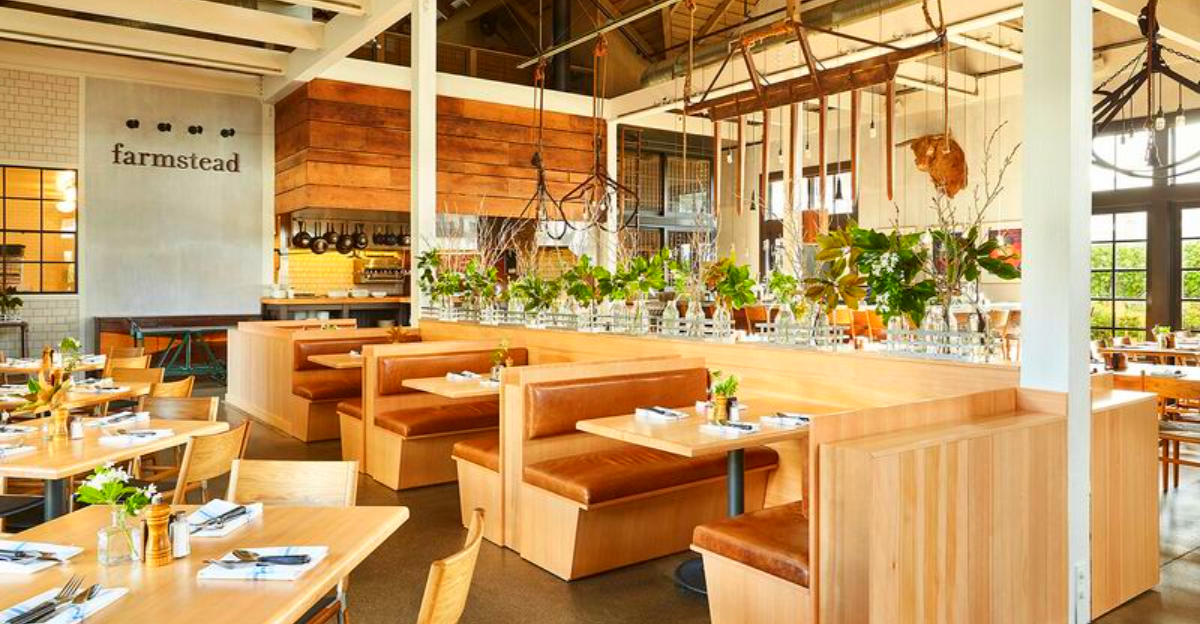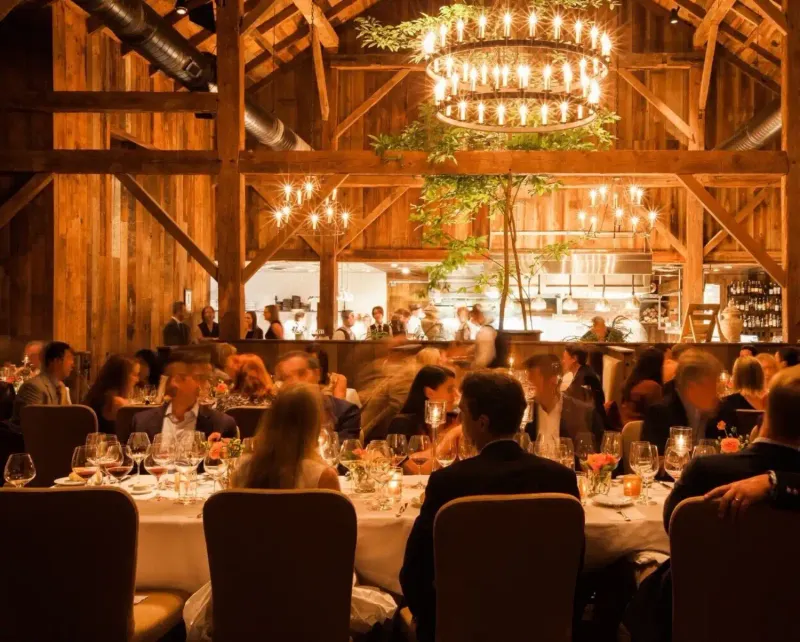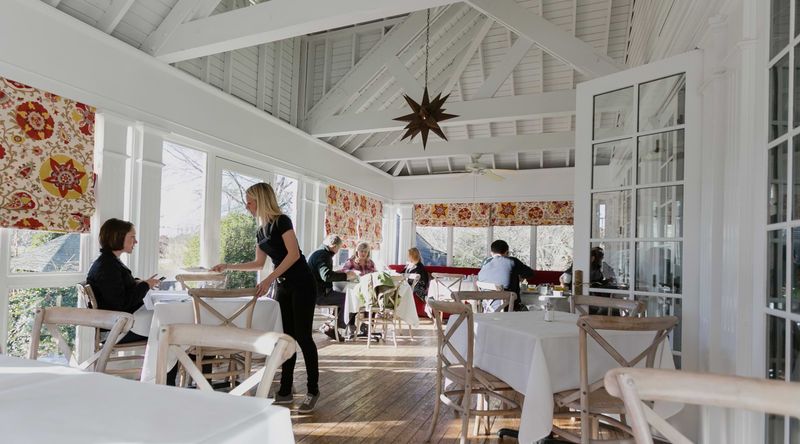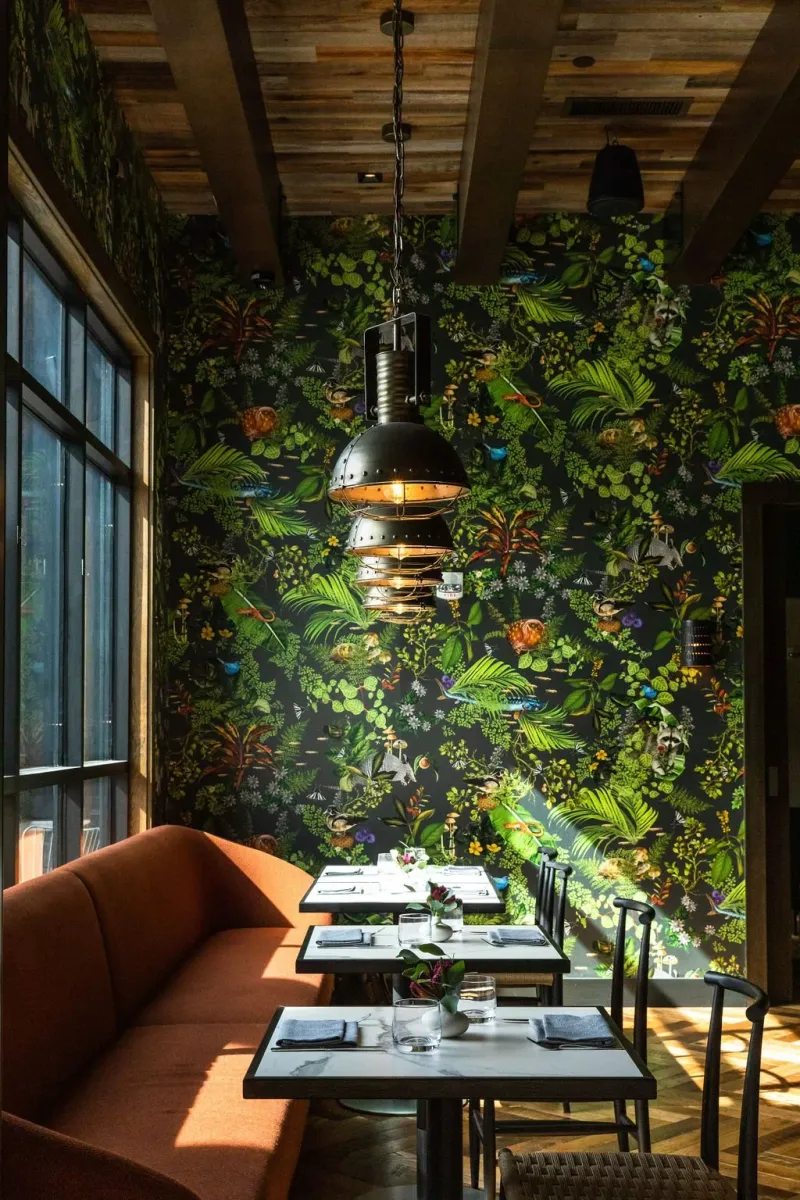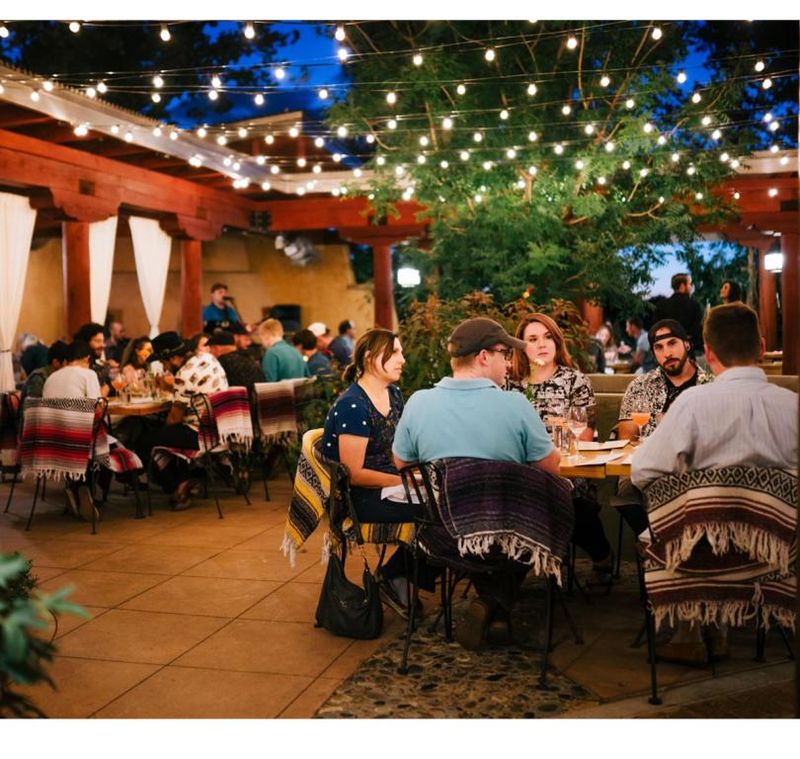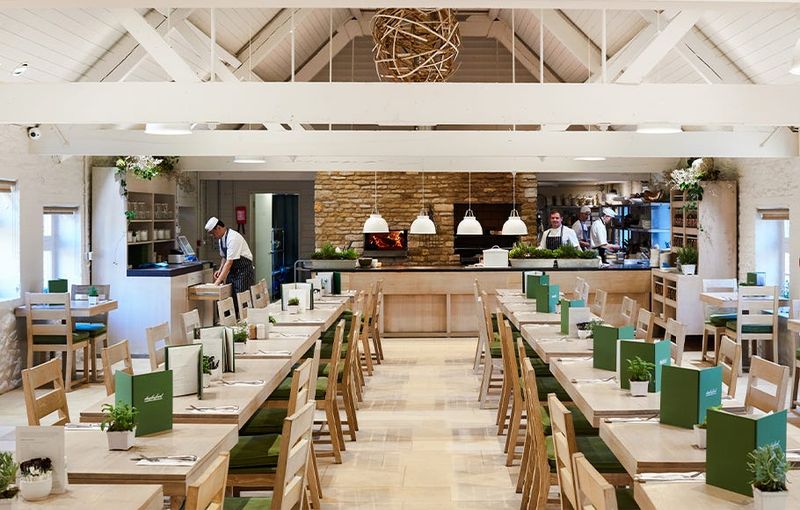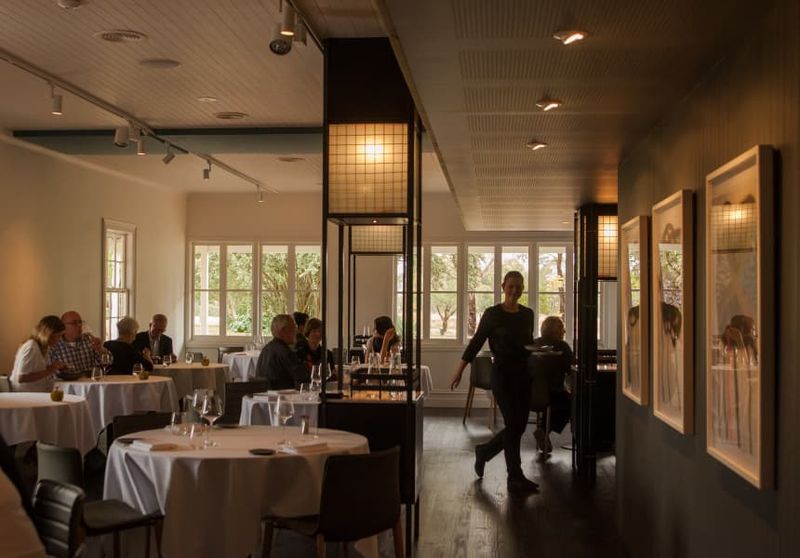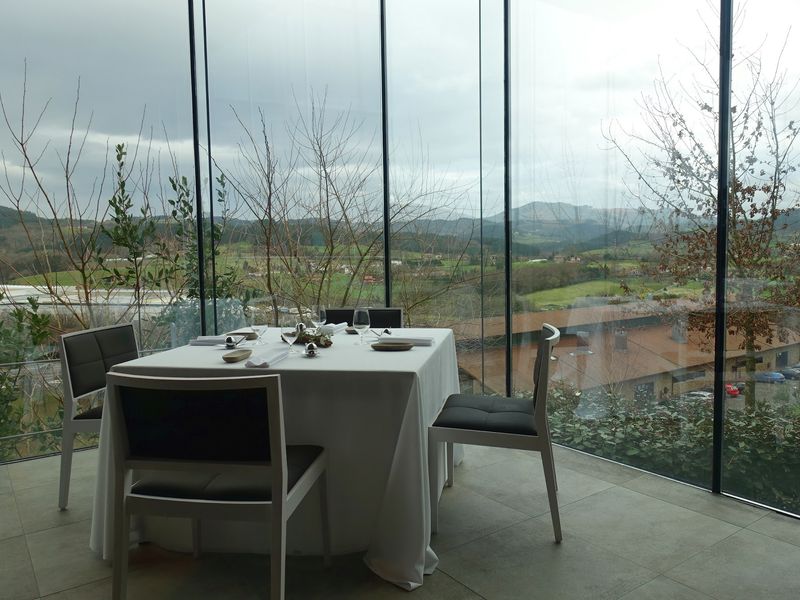Most restaurants claim to be farm-to-table, but only a handful actually grow their own food. These special dining spots take the concept seriously by raising vegetables, herbs, and even livestock right on their property. From California to Spain, these restaurants prove that the freshest meal starts just steps from the kitchen door.
1. Blue Hill at Stone Barns (Pocantico Hills, NY)
Nestled on the grounds of Stone Barns Center, this restaurant has become legendary for its commitment to true farm-to-table dining. Chef Dan Barber and his team work directly with farmers to create seasonal menus that change based on what’s growing outside. Every dish tells a story about the land and the people who tend it.
The experience here goes beyond just eating. Guests can explore the working farm before their meal, meeting the animals and seeing where their dinner actually comes from. The restaurant rotates its offerings throughout the year, so spring meals look completely different from fall dinners.
Reservations book up months in advance because people travel from around the world to taste this level of freshness and creativity.
2. SingleThread Farm, Restaurant & Inn (Healdsburg, CA)
Earning three Michelin stars is incredibly rare, and SingleThread achieved this honor while growing most of its own ingredients. The restaurant owns a 24-acre farm in Sonoma County where farmers raise heirloom vegetables, herbs, and flowers specifically for the kitchen. This connection between soil and plate creates flavors that simply can’t be replicated with store-bought produce.
Chef Kyle Connaughton and his wife Katina run both the restaurant and farm as one integrated operation. They plan menus months ahead based on what they’re planting. The Japanese-inspired cuisine highlights each ingredient’s natural taste without hiding it under heavy sauces.
Dinner here feels like a journey through the seasons, with every course reflecting the farm’s current harvest.
3. The Barn at Blackberry Farm (Walland, TN)
Blackberry Farm operates as a luxury resort, but their commitment to farming is absolutely serious. The property includes working fields, a creamery that produces artisan cheeses, and a larder where they preserve the harvest for year-round use. Resort guests dining at The Barn enjoy multi-course meals featuring ingredients that traveled only a few hundred feet from field to fork.
The creamery deserves special mention since their cheeses have won national awards. Vegetables come from gardens managed by a full-time farming team. Even the meats often come from animals raised on the property or nearby partner farms.
This level of control over ingredients means chefs can experiment with flavors most restaurants never access.
4. The Inn at Little Washington (Washington, VA)
For over four decades, this legendary restaurant has been perfecting its farm-to-table approach. Chef Patrick O’Connell sources herbs and vegetables from gardens right on the property, plus dedicated farm facilities nearby that grow specifically for the restaurant. The commitment to quality has earned them three Michelin stars and a reputation as one of America’s finest dining destinations.
Walking through their gardens reveals the incredible variety they grow. From rare heirloom tomatoes to unusual herbs, the farming team cultivates ingredients that give chefs creative freedom. The restaurant also maintains strong relationships with local farmers for items they don’t produce themselves.
Each season brings new possibilities as different crops reach their peak ripeness.
5. The Herbfarm (Woodinville, WA)
Imagine sitting down to a nine-course dinner where nearly every ingredient was harvested that same day from gardens you can see through the windows. The Herbfarm makes this experience possible with their on-site gardens and farm that supply most of what appears on your plate. The restaurant changes its menu constantly based on what’s ready to harvest, creating truly seasonal dining.
Herbs take center stage here, as the name suggests. The garden grows over 200 varieties of culinary and medicinal herbs that flavor dishes in unexpected ways. Vegetables, edible flowers, and fruits round out the farm’s production.
Dinner lasts several hours, giving guests time to savor each carefully crafted course and learn about where it came from.
6. The Farmhouse at Serenbe (Chattahoochee Hills, GA)
Located in a unique agrihood community, The Farmhouse sits right next to Serenbe Farms where most of its ingredients grow. The restaurant’s garden and the adjacent farm provide vegetables, herbs, and even some proteins that chefs transform into Southern-inspired dishes. This setup means the menu changes weekly, sometimes daily, based on what’s been harvested.
Serenbe Farms operates as a certified organic farm that supplies not just the restaurant but also local families through a CSA program. The restaurant gets first pick of the harvest, ensuring peak freshness. Chefs often walk through the fields in the morning to plan that evening’s specials.
The connection between farm and kitchen creates meals that taste distinctly of place and season.
7. Farmstead at Long Meadow Ranch (St. Helena, CA)
In the heart of Napa Valley, this restaurant proves that wine country can produce amazing food too. Long Meadow Ranch operates as an organic farm, cattle ranch, and vineyard, with Farmstead restaurant showcasing all of these products. Grass-fed beef, organic produce, olive oil, and estate wines all come from the property, creating a complete farm-to-table experience.
The ranch raises Highland cattle that graze on pasture, producing exceptionally flavorful beef. Olive trees provide oil pressed on-site. Vegetables grow in organic gardens managed according to sustainable principles. Even the wine list features bottles made from grapes grown on the ranch.
This level of vertical integration means the restaurant controls quality from seed to plate.
8. Sojourner at Southall Farm & Inn (Franklin, TN)
The concept of seed-to-table dining reaches its peak at Sojourner, where the resort’s working farm, greenhouses, and orchards provide nearly everything on your plate. While primarily serving resort guests, this restaurant occasionally opens for outside reservations, offering a chance to taste truly estate-grown cuisine. The farming operation includes multiple greenhouses that extend the growing season and protect delicate crops.
Orchards on the property provide seasonal fruits that appear in both savory dishes and desserts. The greenhouse system allows year-round production of greens and herbs. A dedicated farming staff works closely with chefs to plan plantings months in advance.
This coordination between farm and kitchen creates menus that feel both spontaneous and carefully orchestrated.
9. Shelburne Farms Inn Dining (Shelburne, VT)
Set on a stunning 1,400-acre working farm and education center, Shelburne Farms offers seasonal farm-to-table meals that are open to the public. The historic inn’s dining room serves dishes made from vegetables, dairy, and meats produced right on the property. Unlike many farm restaurants that primarily serve resort guests, Shelburne welcomes anyone who wants to experience genuine farm dining.
The farm operates as a nonprofit education center teaching sustainable agriculture. Their cheese-making operation produces award-winning cheddar from the farm’s Brown Swiss cows. Gardens supply vegetables throughout the growing season. The property’s size allows for diverse farming operations including livestock, vegetables, and maple sugaring.
Meals here connect diners to both delicious food and important agricultural education.
10. Farm & Table (Albuquerque, NM)
Right in the middle of Albuquerque, this restaurant overlooks Sol Harvest, its own on-site organic farm. Diners can watch farmers working in the fields while enjoying meals made from those very vegetables. The farm grows year-round in New Mexico’s high desert climate, providing a steady supply of produce supplemented by other local farmers.
Sol Harvest focuses on vegetables, herbs, and edible flowers that thrive in the Southwest. The restaurant’s menu celebrates New Mexican flavors and traditions using the freshest possible ingredients. Chefs adjust dishes daily based on what’s been harvested.
The transparent connection between field and plate makes every meal feel more meaningful. Kids especially love watching the farm while they eat vegetables that grew just steps away.
11. The Farmhouse Restaurant at Fair Oaks Farms (Fair Oaks, IN)
Fair Oaks Farms operates as both a working farm and an agricultural education destination, with The Farmhouse Restaurant serving as the delicious culmination of the experience. Beef, pork, and produce from the farm’s operations anchor the menu, giving visitors a chance to eat food from animals and fields they may have just visited. The farm raises thousands of cattle and pigs using modern, humane practices.
After touring the dairy, pig, or crop operations, families can enjoy burgers made from Fair Oaks beef or pork dishes from the farm’s hogs. Vegetables and grains supplement the protein-focused menu. The restaurant aims to show how modern farming works while serving genuinely tasty food.
It’s farm-to-table education you can actually taste.
12. Daylesford Organic, The Trough Cafe (Cotswolds, UK)
Earning a Michelin Green Star recognizes restaurants committed to sustainable gastronomy, and Daylesford’s farm-to-fork cafes have achieved this honor. Located on Daylesford’s organic farm in the beautiful Cotswolds, The Trough Cafe pulls ingredients directly from the market garden visible from the dining area. Everything from vegetables to meat comes from the certified organic farm.
The farm has been organic for decades, long before it became trendy. Market gardens supply seasonal produce while livestock operations provide meat and dairy. The cafe changes its menu with the seasons, celebrating whatever is currently at its peak.
British farm cooking reaches its highest potential here, proving that simple ingredients grown well need little embellishment. The cafe welcomes everyone, making organic farm dining accessible rather than exclusive.
13. Ballymaloe House Restaurant (Shanagarry, Co. Cork, Ireland)
For generations, the Allen family has been cooking legendary meals at Ballymaloe House using produce from their own gardens and farm. This Irish country house restaurant helped pioneer the farm-to-table movement in Europe long before it had a trendy name. The gardens produce an incredible variety of vegetables, herbs, and fruits that define Irish country cooking at its finest.
Darina Allen, part of the family that runs Ballymaloe, also founded a famous cooking school on the property. The restaurant continues serving guests with the same philosophy that made it famous. Traditional Irish recipes meet garden-fresh ingredients in dishes that taste like home.
Visiting Ballymaloe feels like being welcomed into a family farmhouse where the food just happens to be extraordinary.
14. Brae (Birregurra, Victoria, Australia)
In rural Victoria, Brae has become one of Australia’s most celebrated restaurants by growing ingredients on its 20-acre organic farm. Chef Dan Hunter and his team farm the land using regenerative practices that improve soil health while producing incredible vegetables, herbs, and fruits. The restaurant’s remote location makes the farm essential, not just a nice feature.
The farm operates according to organic and biodynamic principles, creating a closed-loop system where nothing goes to waste. Composting returns nutrients to the soil. Heritage vegetables and unusual varieties give chefs ingredients unavailable anywhere else. The menu changes constantly as different crops reach harvest.
Destination dining doesn’t get more authentic than this. Guests travel hours to reach Brae, knowing the journey rewards them with truly unique flavors.
15. Biltmore Estate Restaurants (Asheville, NC)
America’s largest home sits on an 8,000-acre estate that includes working farms, gardens, and forests. Biltmore’s restaurants serve meats, eggs, and produce raised and grown right on the property, giving guests a taste of estate-grown cuisine. The scale of the operation allows for diverse farming including cattle, chickens, vegetables, and specialty crops.
Multiple restaurants on the estate each have their own character, but all share access to estate-raised ingredients. The farming operation has been part of Biltmore since the Vanderbilt family built the mansion in the 1890s. Today’s farm uses modern sustainable practices while honoring that agricultural heritage.
Eating at Biltmore connects you to over a century of American farming history. The sheer size of the estate makes it one of the most ambitious farm-to-table operations anywhere.
16. Herdade do Esporao Restaurant (Reguengos de Monsaraz, Portugal)
This Michelin-starred restaurant with a Green Star operates on a wine and farm estate in Portugal’s beautiful Alentejo region. Herdade do Esporao is completely self-sufficient in vegetables through its market garden and raises livestock on the estate for meat. The restaurant celebrates Portuguese ingredients and traditions while meeting the highest standards of sustainable dining.
The estate produces wine, olive oil, vegetables, and meat all on the same property. Chefs work directly with farmers and winemakers to create menus that showcase everything the land provides. Traditional Portuguese recipes get elevated through exceptional ingredients and skilled cooking.
The combination of Michelin quality and complete farm-to-table integration makes this restaurant special. Guests taste the essence of Alentejo’s agricultural bounty in every dish.
17. Azurmendi (Larrabetzu, Basque Country, Spain)
Earning three Michelin stars while growing your own produce is remarkable, but Azurmendi takes it further with rooftop gardens and on-site greenhouses integrated into the restaurant’s stunning architecture. Chef Eneko Atxa grows much of the produce used in his highly creative Basque cuisine right on the property. The building itself was designed around sustainability, with gardens that are both functional and beautiful.
The greenhouses allow year-round production of herbs, greens, and vegetables despite the region’s climate. Rooftop gardens provide additional growing space while insulating the building. This integration of farming and architecture creates a unique dining environment where you’re surrounded by growing food.
Basque cuisine is known for respecting ingredients, and Azurmendi proves that respect starts with how you grow them.
